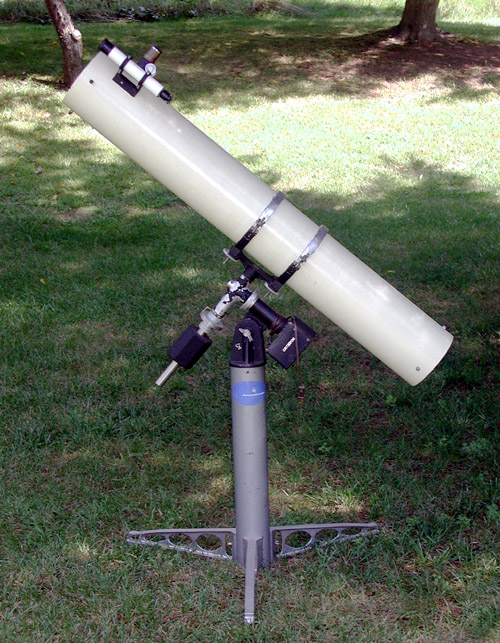
What is this page about? Basically its purpose is to show the basic parts of a Newtonian reflector telescope. All Newtonians will have a design similar to the scope shown in this article. The scope depicted here is a classic 6 inch F8 design. This design of telescope is arguably the best "all around" performer for the 6 inch size. It is a great performer for both planetary/lunar work as well as deep sky work.

Here is what a classic 6 inch F8 Newtonian reflector telescope looks like. It is on an equatorial mount (although today many such scopes are on Dobsonian mounts).
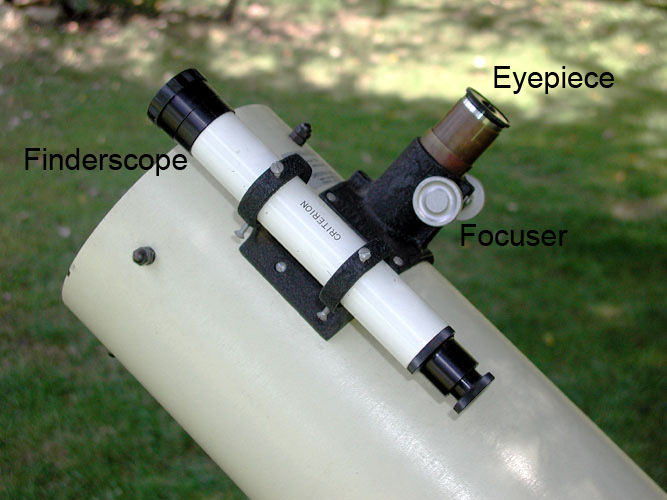
This view shows a close up of the finderscope and the focuser. A finderscope is basically a small telescope that greatly aides the locating of objects in the main telescope. A finderscope is a low magnification and wide field scope that has crosshairs. When properly lined up (only has to be done once), the user simply locates the object to be view on the crosshairs, and then it will be centered in the eyepice of the main telescope. The focuser allows the telescope to be focused. The focuser will typically accept 1.25" diamter eyepieces, some will also accept 2" diameter eyepieces. Older scopes may have focusers that will only accept the older .965" diameter eyepieces; since sources of decent quality .965" eyepieces have dried up, it is often necessary to update to a 1.25" focuser in order to use quality eyepieces with an older scope.
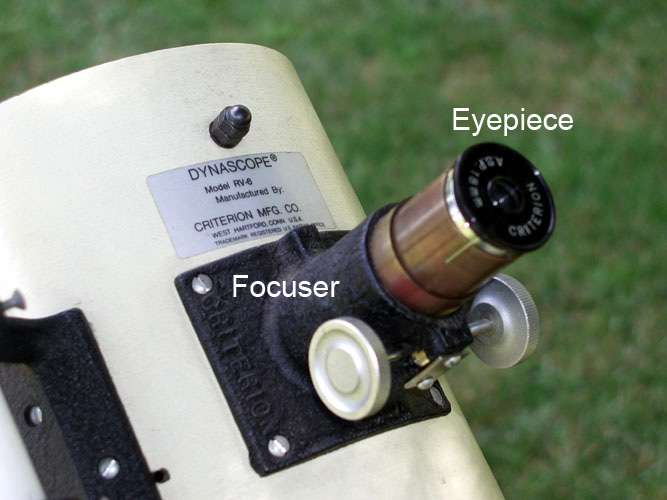
A close up of the focuser/drawtube with an eyepiece installed.
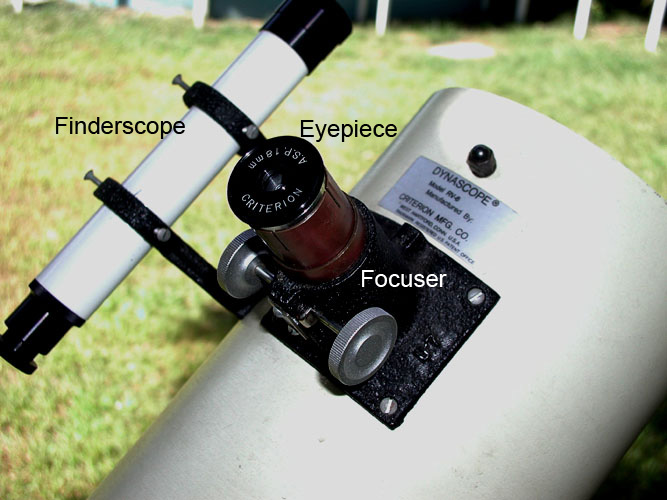
A view of the focuser and finderscope from the opposite side of the scope.
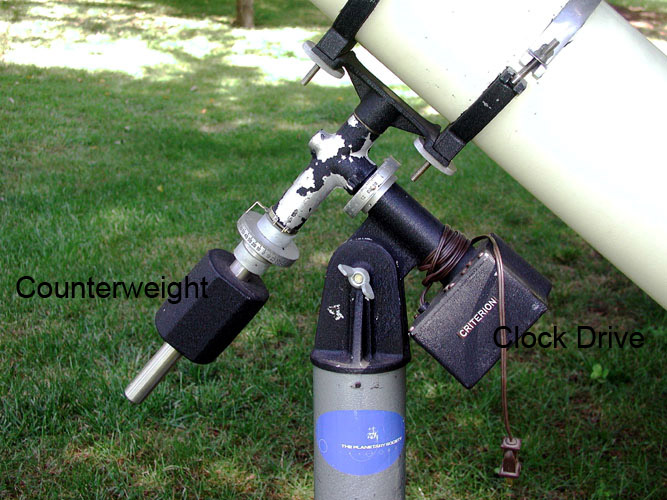
This image shows the equatorial mounting of the telescope. There are several key items to be aware of: the polar axis, the declination axis. When properly used, an equatorial mounting allows the user to more easily track objects as the Earth rotates. The counterweight allows the telescope to be balanced (the weight can be moved on the bar as required). This scope also has an electric clock drive, this will allow the scope to automatically follow objects as the Earth rotates. Most scopes will equatorial mounts also have setting circles. When properly set up and used, setting circles allow a user to find the approximate location of various objects (assuming one knows the coordinates of the object, such coordinates are available from many sources).
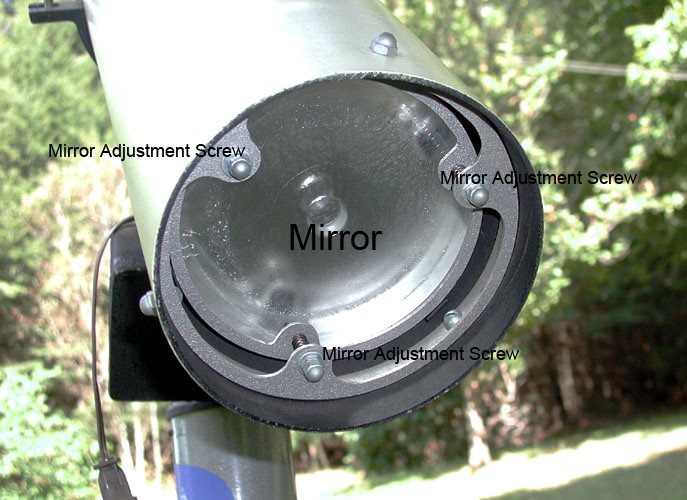
This image shows the mirror cell of the telescope. How can you tell if you have a reflector telescope? If it has a mirror at one end it is a reflector (refractors have lenses instead of mirrors). The mirror cell holds the mirror and allows it to be adjusted (as part of the collimation process) to allow the best views. Reflectors do require proper collimation every now and then to get the best images. This mirror cell has 3 screws that allow fine tuning of the mirror's position.
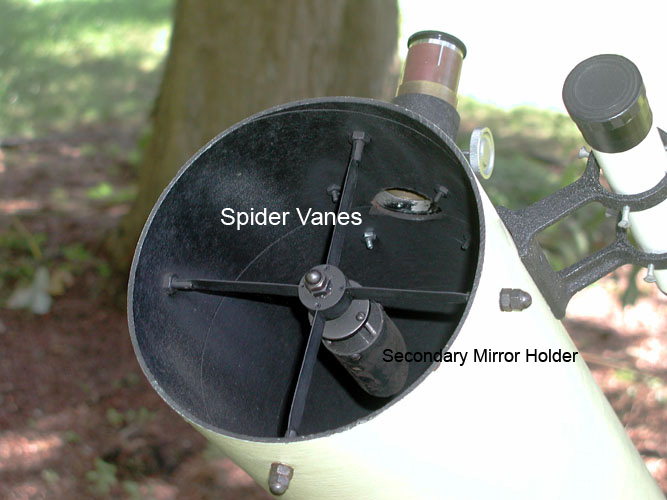
This image shows a view into the front of the optical tube. The assembly at the front of the tube (on the inside) is known as the spider. Its purpose is to hold the secondary mirror in position. This spider has four vanes, some scopes will have only 3. The round object on the inside of the spider is the secondary mirror holder. The actual secondary mirror is not visible from this position (one can see it by looking into the eyepiece drawtube when there is no eyepiece installed). The secondary mirror holder also has 3 screws to allow fine tuning of the alignment of the secondary mirror (only one is visible in this image). Note that the inside of the optical tube is painted flat black, this is to minimize stray light that might be caused be reflections in the tube.
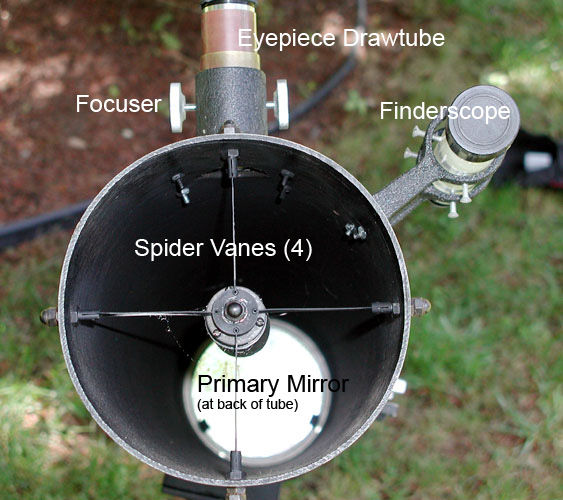
Here is a view looking down the optical tube. The spider and secondary mirror holder are visible. The primary mirror (somewhat out of focus) is also visible at the back end of the tube.
Use your browser's "back" button, or use links below if you arrived here via some other path:
This page is part of the site Amateur Astronomer's Notebook.
E-mail to Joe
Roberts
Images and HTML text © Copyright 2007 by Joe Roberts. Please request permission to use photos for purposes other than "personal use".